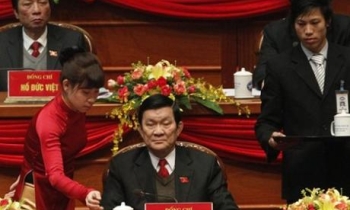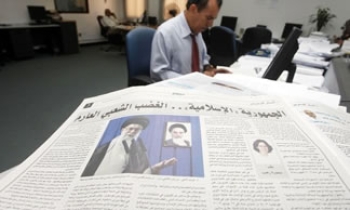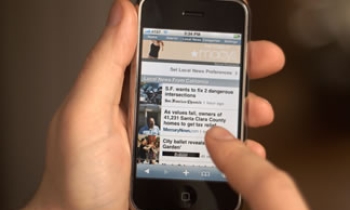(May 22, 2006) -- What does it take to advance your newspaper reporting or editing career? Well, the old stand-bys of talent and hard work still apply, and a bit of who-you-know thrown in can be helpful. But these days, there's more to it.
Let's add in a willingness and ability to add non-traditional job responsibilities to get onto the fast lane of career advancement. Start piling on the job responsibilities -- especially those involving new media and cross-media -- and you might be able to speed away from the crowd.
And for journalism students just entering the news world professionally, for goodness sake don't think too narrowly. Be ready and willing to consider basic reporting and editing duties as just the start of your new job. There's so much more you should be doing than reporting and writing -- if you want to be noticed and move up, that is.
The New Requirements
What seems to be becoming the norm in newsrooms these days is that a growing group of reporters, photographers and editors are now working in jobs where there's a wide variety of tasks to be done each day: feeding the newspaper's Web site; writing for blogs and interacting with blog readers; gathering audio for the website and/or radio partners; recording video clips; participating in online chats and discussion forums ... Oh, and writing for the newspaper's print edition.
To stand out from the rest of the crowd and climb the corporate ladder, I'd contend that you need to take on some of those responsibilities. The journalists -- young or old -- who stick to the old definition of what a newspaper reporter or editor is about are the ones who will get passed over.
The Palm Beach Post (Fla.) is a typical example of this career phenomenon in action. A growing group within the newsroom are doing things that their predecessors might marvel at -- and perhaps be a little bit shocked at the expanded workload for these people.
According to media editor Mary Kate Leming, who as part of her job coordinates the paper's working relationship with local TV and radio stations to which the Post provides content, it's becoming much more common for reporters, editors, photographers and columnists to cross back and forth between job tasks that involve print, the Web, TV and radio. Indeed, the paper is currently in the process of providing more training for reporters so that they can operate effectively at multiple news tasks in multiple media formats.
Examples of Post news staff crossing media lines, cited by Leming, include:
-- Frank Cerabino, metro columnist: He currently also does two TV commentaries each week for the local Fox affiliate station, and produces interactive elements to his constantly updated blog, Bino's Blogeroni. Right now he's driving an SUV across the U.S. as part of a series, "Guzzlin' Across America," for which he's updating his blog, calling in daily to one of the Post's radio partners, shooting photos for the paper's website, and shooting video for the TV partner. (That array of multi-media multitasking makes columnists who just sit down and write text look, dare I say it, lazy.)
-- Leslie Streeter: The paper's "entertainment diva" also writes for her blog, plus appears once a week in a 5-minute feature segment on the Fox affiliate to talk about what's happening around Palm Beach over the weekend, the latest analysis of American Idol, etc.
-- Greg Stepanich, assistant business editor: Not content to work just on business topics, he writes a popular classical-music blog for the Post's website that includes sound bites, photos and interviews. He also writes and performs the music for PalmBeachPost.com's weekly podcast, and is a regular book reviewer for the paper. He even wants the paper to start selling cell-phone ringtones from his music compositions. (Whew!)
-- John Lopinot, deputy photo editor: His recent project has been to get the news photography staff to carry audio recording gear, and encourage them to think about Web presentation on a daily basis. Lopinot leads by example, producing his own audio photo slideshows and video productions, plus writing and producing his own narrations for multimedia projects.
When you compare that workload to what was the norm back in the day (that is, pre-Internet), it's remarkable. These modern journalists have more varied and interesting jobs, I'd say -- but they also appear to have positions that require more focus and energy to survive the day.
Still, the model those individuals set is what today's journalists probably must do to survive in the profession. Leming says that such career multi-tasking is not mandatory in the newsroom at this point, but "it's understood by everybody that things are moving in that direction."
Rushing Through the Days
Possibly one of the busiest people in the Palm Beach Post newsroom is 26-year-old Rochelle Gilken, a day-side crime/police reporter working out of the central newsroom. The biggest difference between her and a newspaper crime reporter of old is that as her day progresses, she typically feeds the Post website with short stories (Web feeds) several times per day. And she has a crime blog to keep fed with content (along with a second crime reporter working out of a Post regional bureau). Plus there are the print-edition stories to write before the end of the day.
Gilken says that the demand for instant news to go online is nearly constant. In large part, it's the nature of her beat. When a plane, train or bus crashes, or a highway is closed due to a sinkhole, or a bank gets robbed, people want to know about that now, not tomorrow morning. Reporters for some other beats don't face the same kind of write-it-right-now deadline pressure.
By now it's second nature for Gilken to fire off a short piece for PalmBeachPost.com after initial reporting of a breaking police-beat story. But throughout most days, she receives requests from editors for Web feeds on the stories she's reporting. On the day before I interviewed her for this column, she received four requests for Web feeds before noon.
Is that annoying? "There's no pressure to drop what I'm doing to write a Web feed immediately," she says. Usually, it's more of a "when you get the chance" request.
Gilken has developed new work habits to meet the demands. She carries a Blackberry and uses it to check her e-mail when out reporting, and to thumb-type short Web feeds to send in to the online staff. She admits to checking her e-mail while waiting at red lights. She might write while at a concert or parade, just to keep up with what's required of her. Talking to Gilkin about her days, it doesn't sound like there's much down time.
Technology has made much of this possible, of course. (The technology that "makes our lives easier" does seem, for many of us, to instead have made us busier.) Gilken carries cell phone and Blackberry, plus a digital tape recorder for recording audio for the website and the Post's radio partners, plus a handheld police scanner. At least she doesn't have to take photos or shoot video.
What surprises Gilken about many of her days "is how much I've already written when I have to go and write my story" for the next day's print edition. "Some days I get into the office (after returning from reporting in the field) and say, 'Oh, I still have to write a story!'" she says.
Oh, and I should mention that Gilken also writes a regular fantasy football column for the print edition (for which she's paid) plus does a fantasy football blog (which is not a paid thing).
I think that Gilken is the archtypical example of the modern newspaper reporter. While not every reporter today is as busy as her, nor has as many cross-media responsibilities yet, the newspaper reporting profession is clearly headed in her direction. As she acknowledges, the requirements for reporters today are for more intensity and more hussle than was required in the past.
So, perhaps, just as it's always been, it's those who have that hussle and drive who get ahead fastest in the news profession. Gilken says she assumes that all this cross-media work and the juggling will be good for her career, should she move on to other news organizations at some point or get promoted by her current employer. If you're an old or new journalist looking for tips on career advancement in this Internet/convergence era, Gilken's frenetic example may be a good one to follow.
Coming Back Full Circle?
Of course, I have to raise the issue of burnout. A new generation of reporters juggling writing, reporting, recording audio and video, blogging, chatting online with readers, answering reader e-mails and forum threads, appearing on TV and radio, etc. may not be able to keep up the pace long term.
But then, as new-media consultant Peter M. Zollman points out, the "new" model looks a bit like the old news wire service model. He's a UPI veteran from the 1970s. "Even back then there were multimedia reporters," Zollman says. "I was one of them. I would frequently write a broadcast story first -- short, punchy, conversational, timed in seconds -- and then write for the newspaper wire -- longer, narrative form or inverted pyramid, etc. Then I would do a 'voicer' or a 'wrap' for UPI Audio, a private-label radio network. ... Occasionally I appeared on television news programs, too, as an interviewer or guest panelist."
"Sounds a lot like what's being expected of the reporters today," Zollman says.
Want to get ahead in the news profession? Then look to both these new and old models.
Steve Outing (letters@editorandpublisher.com)









